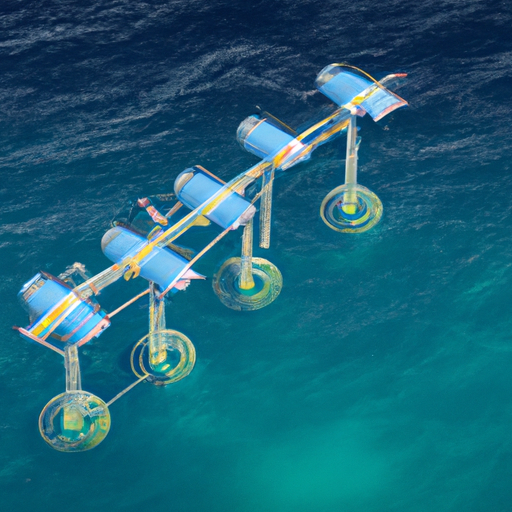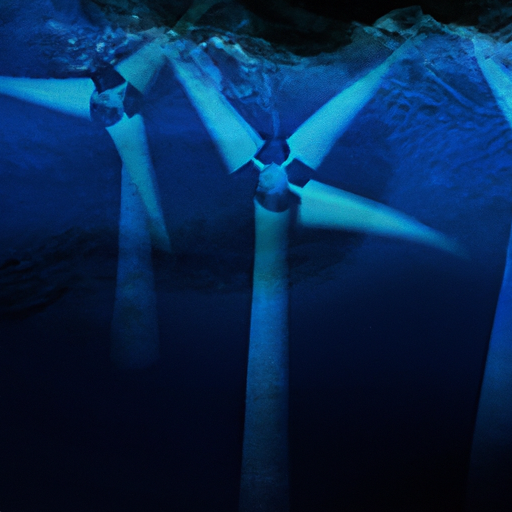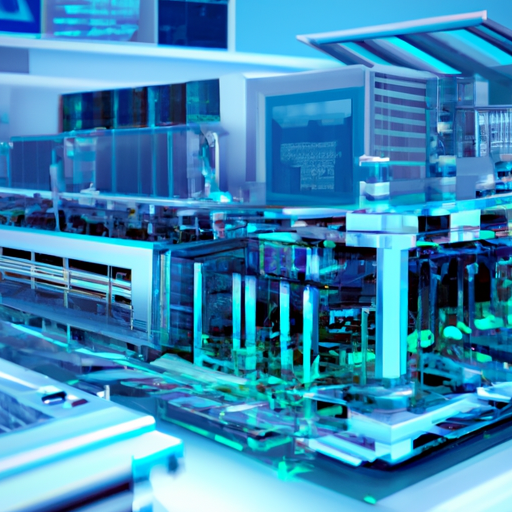A pioneering underwater turbine system has successfully harnessed deep ocean currents to generate consistent renewable energy. The groundbreaking technology has demonstrated unprecedented efficiency in converting marine kinetic energy into electricity. This innovation could provide a reliable alternative to traditional renewable energy sources, potentially powering millions of homes worldwide.

In a remarkable advancement for renewable energy technology, marine engineers and environmental scientists have successfully deployed and tested a revolutionary ocean current energy system that could transform how we harvest clean power from the seas. The Deep Current Energy Conversion System (DCECS), developed through an international collaboration of researchers and engineering firms, has demonstrated unprecedented success in converting the steady flow of deep ocean currents into reliable electrical power.
The system, installed in the Gulf Stream off the coast of Florida, consists of an array of innovative underwater turbines designed to operate at depths of 300 to 500 meters. Unlike previous attempts at ocean current energy harvesting, these turbines utilize a breakthrough in hydrodynamic design that allows them to capture energy from currents moving as slowly as 2 knots while remaining fully operational in currents up to 8 knots.
Dr. Elena Martinez, lead engineer of the project, emphasizes the unique advantages of this system: "Ocean currents are essentially rivers within the sea that flow consistently 24/7, unlike wind or solar power which are intermittent by nature. Our DCECS technology can provide baseload power generation – something that has been the holy grail of renewable energy."
The technical innovations behind the DCECS are remarkable. The turbines feature adaptive blade geometry that automatically adjusts to changing current conditions, maximizing energy capture while minimizing stress on the equipment. The system's modular design allows for easy maintenance and replacement of components, addressing one of the major challenges of underwater power generation.
Perhaps most impressive is the system's efficiency. Initial tests have shown conversion rates of up to 47% of the available kinetic energy into electrical power, far exceeding the typical 20-30% efficiency of traditional hydroelectric systems. A single array of ten turbines can generate enough electricity to power approximately 10,000 homes.
Environmental impact studies conducted alongside the technical trials have shown minimal effect on marine life. The turbines rotate at relatively slow speeds and include protective screens to prevent wildlife entanglement. Additionally, the deep-water placement avoids interference with shipping lanes and surface marine activities.
The economic implications of this technology are significant. While the initial installation costs are substantial, the operational costs are remarkably low, and the system's lifespan is estimated at 25-30 years. Analysis suggests that once scaled up, the cost per kilowatt-hour could be competitive with or lower than current fossil fuel options.
Global potential for this technology is vast. Dr. James Thompson, an oceanographer involved in the project, explains: "Major ocean currents exist near many of the world's population centers. The Gulf Stream alone could theoretically provide power for the entire East Coast of the United States. Similar opportunities exist with the Kuroshio Current near Japan and the Agulhas Current off South Africa."
The success of the DCECS has attracted significant attention from both private investors and government agencies. Several countries have already begun the process of mapping potential installation sites and conducting feasibility studies. The technology's potential for providing reliable clean energy to coastal regions could be particularly transformative for developing nations.
However, challenges remain before widespread adoption can occur. The deep-ocean environment presents unique difficulties for installation and maintenance, requiring specialized vessels and equipment. The project team is currently developing autonomous maintenance systems using advanced robotics to reduce operational costs and risks.
Transmission infrastructure is another crucial consideration. The project includes the development of innovative underwater power cables and junction systems capable of efficiently transmitting electricity over long distances to shore-based facilities. These advances in marine power infrastructure could have additional applications in offshore wind and other marine energy projects.
The project has also spurred developments in weather and ocean current monitoring systems. Real-time data collection and analysis help optimize the system's performance while contributing to our understanding of ocean dynamics and climate patterns.
As the world continues to grapple with the challenges of climate change and the need for clean, reliable energy sources, the DCECS represents a promising new frontier in renewable energy technology. With continued development and investment, ocean current power could become a significant component of the global energy mix, helping to reduce greenhouse gas emissions while providing stable, sustainable power to millions.
The success of this project demonstrates that with innovative engineering and careful environmental consideration, the vast energy potential of our oceans can be harnessed in a sustainable way. As we move forward, the deep currents that have flowed through our oceans for millennia may well power our journey toward a cleaner, more sustainable future.



